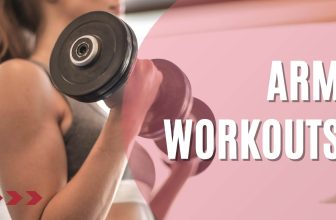Table of Contents
Creatine is one of the most studied ingredients available in supplements these days. This is because creatine is effective, leading to the supplement’s meteoric rise in popularity. It’s a miraculous amino acid that has the potential to improve one’s strength and muscle mass dramatically. WhichChoose provides in-depth information about what creatine is, including its uses, risks, and benefits.
What Is Creatine?
Creatine is an amazing amino acid that combines three different amino acids: Glycine, L-Arginine, and L-Methionine. The names might sound a bit scary, but there’s nothing scary about amino acids combined!
It’s not some steroid form, not even nearly as close, but the results can make some people think that way.
Creatine is naturally produced by the body primarily in the liver and kidney, then transported in the blood and right into the muscles.
Most of the body’s creatine, approximately ninety-five percent, is in the skeletal muscle.
Even though creatine is not an essential nutrient, we often consume about one gram of it, mainly from meat (if you’re not a vegetarian).
How Does Creatine Work?
Creatine works by assisting in the supply of energy to muscle cells.
When working out or performing any other high-intensity activity or sport, your muscles use ATP, which is short for Adenosine Triphosphate.
ATP is the primary fuel for the muscles during this activity, and creatine works as a phosphate reservoir; this is used for regenerating ATP.
In other words, when you are working out, your muscles will contract and lose some phosphate to create energy, allowing you to do more repetitions.
So when you take creatine supplements, you are refueling and creating more ATP to replace the lost phosphate used during high-intensity exercise.
The more creatine available in your body will give you additional energy for those hard workouts and high-intensity activities, pushing you to make that extra rep.
Furthermore, creatine can make you gain weight and help you pack on muscle mass, and that’s because it has a volumizing effect on the muscles by feeding your muscle cells with water and nutrients. If you want to gain weight and make your muscles bigger and stronger, creatine will give you promising results in the first week.
Creatine Benefits
3.1. Creatine Enhances Muscle Recovery
Usually, after a hard and intense workout or activity, your muscle cells are damaged. This is where creatine comes in and regenerates the muscle cell with its properties.
Many studies have shown promising results in enhancing muscle recovery and reducing muscle cell damage and inflammation following an intense workout when 20-25 grams of creatine per day is taken.
3.2. Creatine Increases Muscle Mass, Size, and Volume
This is the main reason most take creatine. It can increase muscle size and volume by causing the muscle to inflate.
Creatine also serves an important role as a stimulus for protein synthesis, which causes muscle growth. You can expect to gain up to six pounds in body weight within the first week.
3.3. Creatine Increases Strength
As you know, you can only increase your muscle size by gaining strength first. More strength means heavier weights and more repetitions, causing your muscles to grow.
Creatine can additionally provide you with a powerful anabolic boost of methylation, which plays an important role in your health.
3.4. Creatine Improves Brain Function
Researchers Wyss and Schulze have looked into the health benefits it can provide beyond just increasing muscle size, strength, volume, and recovery, and their findings were stunning.
Creatine can be a very important neuroprotectant – it increases the survival of nerve cells to environmental insults.
Other Benefits of Creatine
- Gain weight
- Enhances methylation
- Increase power
- Has neuroprotective function
- Increase muscle fiber
Creatine Side Effects
Creatine is natural and safe, but if you have any type of kidney disease or are under 18 you should talk to your physician before taking it.
Most recent studies have shown that subjects taking 10-15 grams per day show no signs of a health difference but are very beneficial to muscle cell recovery and strength increase.
If you are planning on taking creatine, just remember to drink plenty of water with it, and throughout your day, creatine feeds through water, which could dehydrate you pretty quickly and cause health problems. Go for 5 ounces of water for every 3 grams of creatine. The more you drink, the better results, making creatine even safer than it already is.
Creatine is inexpensive and very effective. It’s definitely the number one muscle builder when it comes to safety.
Types of Creatine
With so many different types of creatine products hitting the market every year, there is no doubt about the confusion it gives, even to professional athletes.
The results you get while you’re on it depend on the type of creatine you choose to go with, so it’s important to know the differences.
Some of them work better than others do, just really depends on the type and the form as well (micronized or not, concentrated).
5.1. Creatine Monohydrate
Creatine Monohydrate has been around for years, and it’s the most common form, making it the most researched of all time. Despite all the types of creatine forms that hit the market every year, this one has annual sales in the U.S. of 400 million!
It works, it’s safe, and it’s 86% pure creatine per molecule, allowing only 1 gram of it to supply up to 4.30 grams to the body.
If you want to pack on some great lean muscle mass quickly without breaking your wallet, then creatine monohydrate is definitely the way to go.
5.2. Creatine Nitrate
A new and very effective form of creatine can increase muscle size and pumps to another level. It is a very common ingredient in pre-workout supplements due to the muscle fullness and pumps it gives during a workout. It increases Nitric Oxide (N.O.) in the muscles expanding vasodilation.
It is bonded with salt and an organic nitrate/nitrite group, resulting in nitrate esters but a very low yield.
Great for those looking for fuller muscles and muscle pumps, which will result in muscle growth due to muscle expansion.
5.3. Kre-Alkalyn
Every supplement manufacturer wants their product to work so the user will continue to buy due to the promising results. The main goal when they manufacture creatine supplements is to improve its absorption rate, resulting in increased muscle size and volume.
Kre-Alkalyn is a “buffered” form of creatine that’s processed at higher P.H. levels than the original Creatine Monohydrate. With a higher P.H. level in creatine, it is believed to increase the rate of absorption rate making it faster and better than other competitors.
It’s a great form of creatine and can outperform Creatine Monohydrate on many levels as a study in 2008 came out from Kre-Alkalyn EFX.
It can also lower cholesterol and triglyceride level.
5.4. Micronized Creatine
Micronized creatine is another form of Creatine Monohydrate but in much smaller molecules. It is cut up and divided into very small molecules to reduce the surface area and get absorbed more quickly into muscles while decreasing any stomach discomfort you might be getting with the original form.
5.5. Creatine Citrate
This is just regular creatine that is bonded and mixed with special molecules, usually molecules that can increase the absorption rate as it gets delivered to the muscle cells.
It mixes very easily compared to other types of creatine but only delivers no more than 400 milligrams of active creatine per 1 gram.
It causes less discomfort in your stomach and less bloating, but it can also get very pricey.
Many pre-workout supplements nowadays contain Creatine Citrate as one of their ingredients.
5.6. Creatine Malate
Creatine Malate is another great form that offers a greater ATP production to the muscles during an intense workout or activity.
Malic Acid is known to partake in energy production, and it can easily dissolve in water with nil stomach discomfort.
You will also find this type of creatine in many supplements as one of their ingredients, especially in pre-workout supplements, because they can enhance muscle-building effect and energy within every repetition.
5.7. Creatine Alpha Ketoglutarate (AKG)
Attached to a molecule of AKG, a precursor of glutamine, makes this form of creatine absorption rate good, but it also provides a source of glutamine at the same time.
It is readily absorbed by the intestines, eliminating the possibility of gastrointestinal problems.
5.8. Creatine Phosphate
Not a popular Creatine form, even though the name alone might be “screaming” by me because, as we mentioned earlier, for creatine to be effective, it needs to bond to a phosphate group. Still, when it comes to choosing the best creatine type, we suggest you stay away from this one, not only because of its expensive price tag but also because there has yet to be a study where it has outperformed Creatine Monohydrate.
Creatine Phosphate has only 62.6% creatine per molecule, while Monohydrate has 88%.
5.9. Creatine Ethyl Ester
Claims to have a ten times higher absorption rate than regular creatine due to its solubility, making it easier and faster to travel through muscle cells.
Ethyl Ester is Creatine Monohydrate but with an “ester” bonded to it. What does this mean, and how does it make it better?
Well, an ester is usually made when alcohol molecules are combined with acids. A simple way to understand this would be those normal creatine molecules have a single positive and negative end. When an ester is attached to it, it counteracts its charges allowing it to make a bigger absorption.
It claims that it delivers better and faster results than Monohydrate with smaller dosages and less bloating, but no studies have been reported.
5.10. Effervescent Creatine
You have probably never heard of Effervescent because it is combined with sugar or sodium, two compounds nobody wants. Why would anyone add them, then? Well, it is supposed to increase absorption rate faster than Monohydrate but without any scientific study to back it up.
It tastes better than other forms but also can be very expensive.
5.11. Creatine Serum
If you haven’t taken creatine and are unsure, stay away from this one. It is always talked about and has gained popularity in many forums, but it can leave you disappointed regarding results.
Many reported that it works great with amazing results, while others saw no difference.
It is basically creatine that dissolves in water with various amino acids and vitamins that are bonded with it. No loading phase is required, but why would you risk paying for something just to see if it would work on you when others claim a higher percentage of working, such as Monohydrate?
5.12. Creatine Gluconate
This one is bonded with glucose to increase intestinal absorption. It increases insulin release helping it enter muscle cells.
It’s not a popular form, and little is known about this due to the lack of studies.
When To Take Creatine?
It’s best to take creatine evenly spread throughout the day. Many creatine manufacturers label their products to take post-workout to feed muscles what they lost during the intense activity. In contrast, others claim it works better if taken 30 minutes before a workout.
Even though labels on creatine supplements recommend taking it after and some before a workout, you should take it throughout your day, starting right when you wake up.
Each dosage should be 5 grams of creatine and if you’re aiming towards building muscle mass and strength, go for 20-25 grams per day divided throughout your day evenly.
If you want to get the most out of it, work out after 30 minutes of taking 5 grams of creatine to fuel your muscles throughout your workout.
Taking creatine right after your workout is unnecessary since it’s best to fuel what you lost through amino acids blend and whey protein.
Most protein powders nowadays have some form of creatine with them as well, especially the weight gainers.
How Much Creatine To Take?
Your dosage can vary depending on how fast you want to gain muscle mass.
If you are going for the “loading phase,” you will need 20-25 grams of creatine per day for 7 days. This will cause muscle increase and strength at its maximum in a very short period (1 week).
The “maintenance phase” will still give you muscle growth and strength but will take a bit longer than the loading phase would, and that’s because you are only consuming 5 grams of creatine per day instead of 20-25 grams like the loading phase.
If you choose to go with the maintenance phase, you will gain the same results as the loading phase but in 3-4 weeks.
The loading phase is only recommended for a week, and then you must go back on maintenance mode while cycling it for the best results.
For example:
If you weigh 200 pounds, the loading phase would require 27 grams of creatine per day, and the maintenance phase is 2.7 – 5 grams per day.
To base creatine dose on total weight can be inaccurate due to the body fat and mass differences.
The Creatine intake based on total body weight:
- 140 lbs = 19 grams
- 150 lbs = 20 grams
- 160 lbs = 22 grams
- 170 lbs = 23 grams
- 180 lbs = 25 grams
- 190 lbs = 26 grams
- 200 lbs = 27 grams
- 210 lbs = 29 grams
- 220 lbs = 30 grams
- 230 lbs = 31 grams
- 240 lbs = 33 grams
- 250 lbs = 34 grams
Can Women Take Creatine?
Most women usually stay away from supplements, especially the ones that can increase muscle size and weight. Creatine supplements can make you look bulky and bloated, and what the heck..probably turn you into a bodybuilder overnight! (NOT)
Women can benefit from taking a Creatine supplement by increasing energy levels, a lot more muscle stamina, muscle contractions, and a great muscle pump during their workout.
After a high-intensity activity or workout, your muscles will start feeding the creatine, enhancing your recovery rate.
Within a week, you will notice an increase in your strength gains and end up falling in love with every workout. Better workouts mean better results, even speeding up your fat-burning process!
Women who are just looking to step up their workouts and want to increase strength, recovery, and lean muscle should only take 2-5 grams of creatine per day and no more. A loading phase is not recommended.
Take it daily for up to 30 days, then stop taking it for 15 days before starting again.
So, what is creatine? WhichChoose hopes you find out everything you need to know about this ingredient and its benefits to your muscles, weight, and overall health. On that basis, creatine supplements are also the first choice of many gym-goers to build their muscles.
WhichChoose is the website products and services review that helps users in the world to find what the best is and shop easily.






